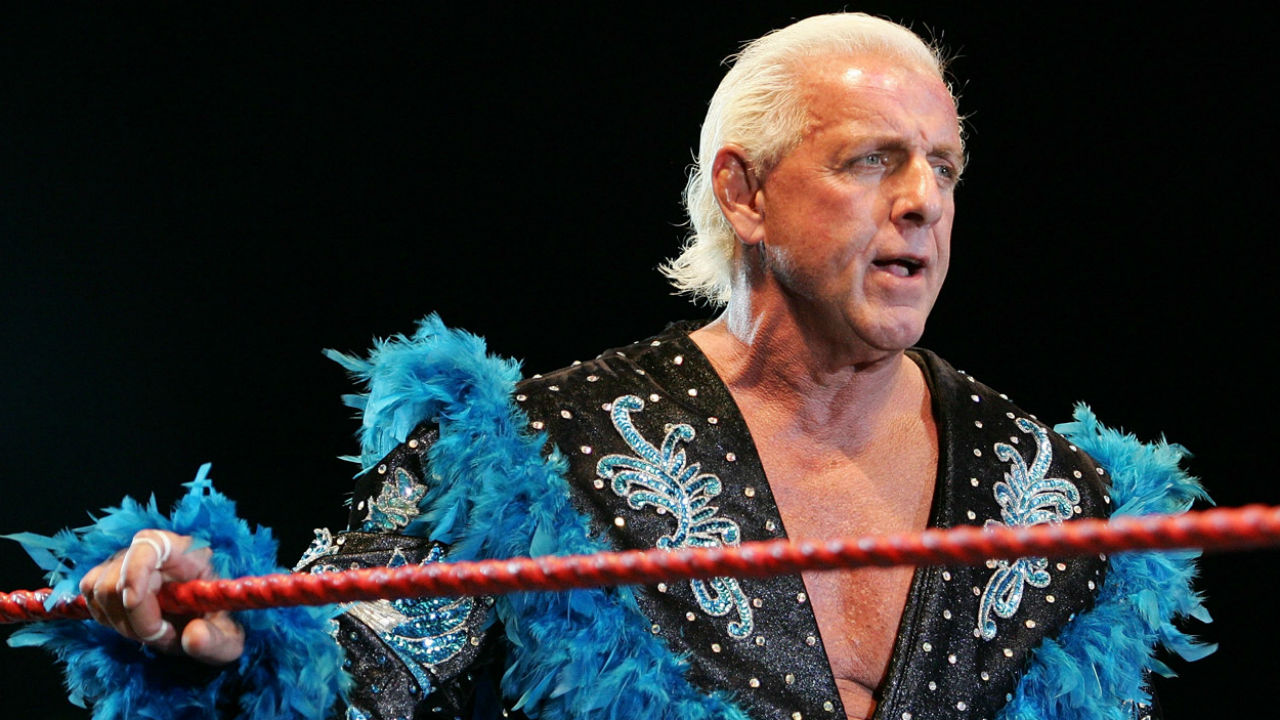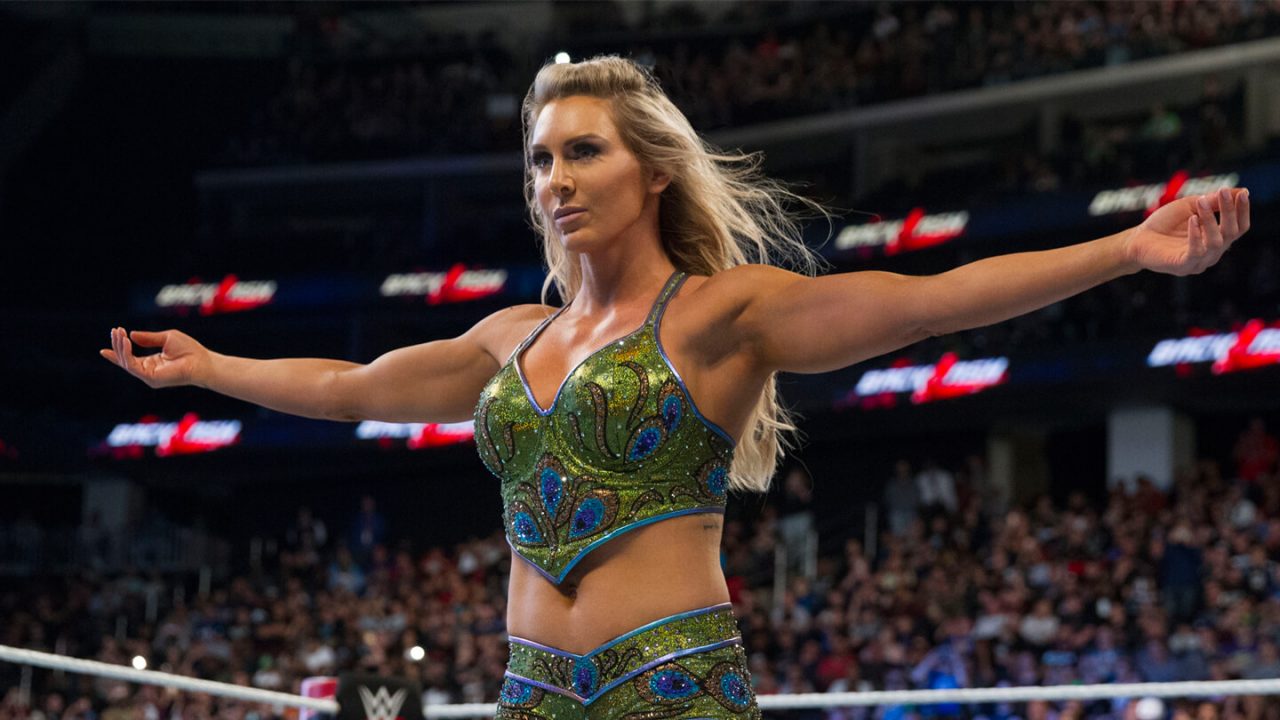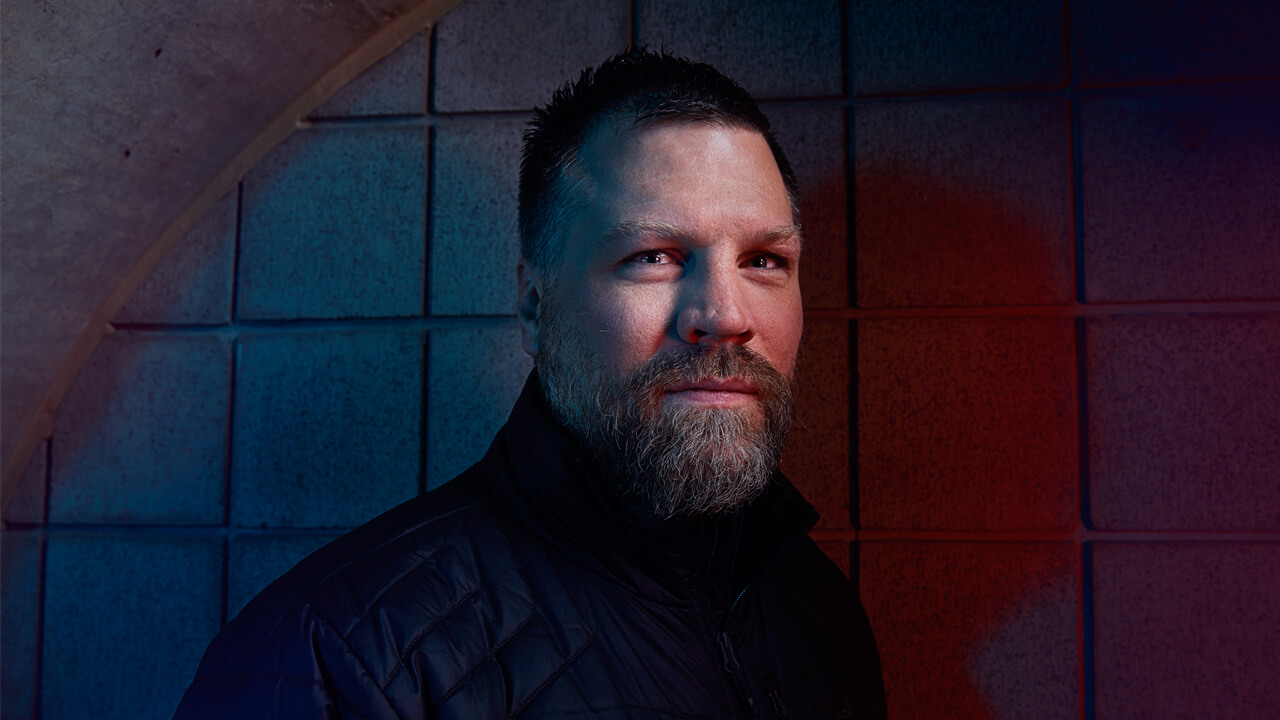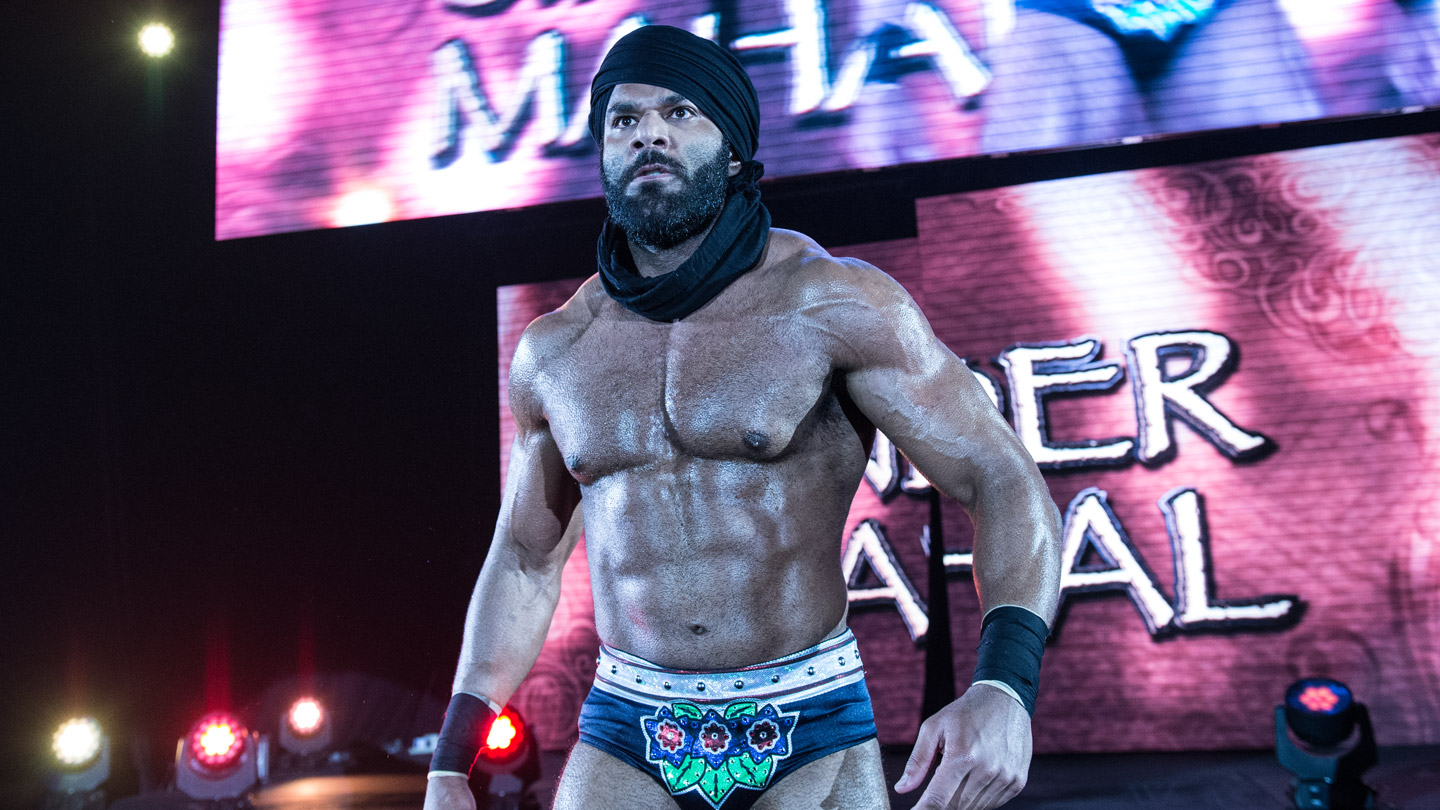Dear reader, the story that follows is from a few years back. It was a dream assignment, at least if we’re talking about a weird, fevered, through-the-looking-glass phantasmagoria induced by the ingestion of psilocybin, Wild Turkey and Nyquil. I had heard about the event discussed below decades ago, and over the years had pitched it to editors who scratched their heads, looked at me uncertainly and suddenly had a call to take or a meeting to make. And that was sort of the reaction I got back when I handed my editors this hot mess of a story, which is a fair representation of a slice of hot-mess life. “What the hell is this?” I was asked, and I told them: “That’s what I was asking myself for three days.”
The rogues’ gallery of characters presented herein are each revealed to be two-sided (at the minimum), alter egos and the flesh and blood behind them, famous heroes and villains and their real-life semi-secret identities. And as it has been in pro wrestling stories I’ve written before, you are somehow left wondering which is real and which is theatre.
A further note: At the end of the story that follows, please don’t make for the exits. There is a post-script that details not just the passing of a couple of the principals here, but also the curious after-life of “Lords of the Ring,” some of it weird beyond all comprehension.
At 57 and at 2 a.m., he looks like just another burned-out case in a bad mood negotiating a sleepless night by wandering through the flashing neon labyrinth that is the floor of the Gold Coast Casino. The hairline has receded to the crown, but in defiance of age, appearance and reason, he has grown the surviving follicles into a mullet and rubber-banded it into a ponytail. He’s all of six-foot-five and no one would want to mess with an inch of him. He walks by the smoke-filled sports book where old men in American Legion jackets watch horse races at faraway tracks and trade war stories.
Some recognize Aurelian Smith Jr., better known as Jake “The Snake” Roberts, but they don’t make eye contact with him. Nobody does, at least until he reaches the stand-up bar where senior citizens who used to call him “Kid” have assumed positions that will last until the wee hours. The oldest wrestled Smith’s father, Grizzly Smith, a.k.a. Ski-Hi Jones. “Give me the hook, Snake,” says “No Class” Bob Bass, a cowardly heel in a black cowboy hat who earned his nickname four decades ago when he tossed a midget wrestler into a hanging light.
Roberts shakes Bass’s hand. Others who used to work the Stampede Wrestling circuit line up to press the flesh. Roberts greets all with words drowned out by the white noise of 10,000 slot machines and then slithers off. “No one ever worked a crowd better; didn’t have to even raise his voice,” says Bob Wayne, a bespectacled and benign-looking 300-pounder who winces with joint pain and struggles to climb back onto his stool.
“Could have been the greatest ever,” Bass says.
The tributes and asterisk attached are loud enough to hear, but the Snake has no ears. He sits down alone at a $5 blackjack table, holds a takeout coffee and tosses a chip onto the green felt. He might not even see passers-by who stop and stare and point.
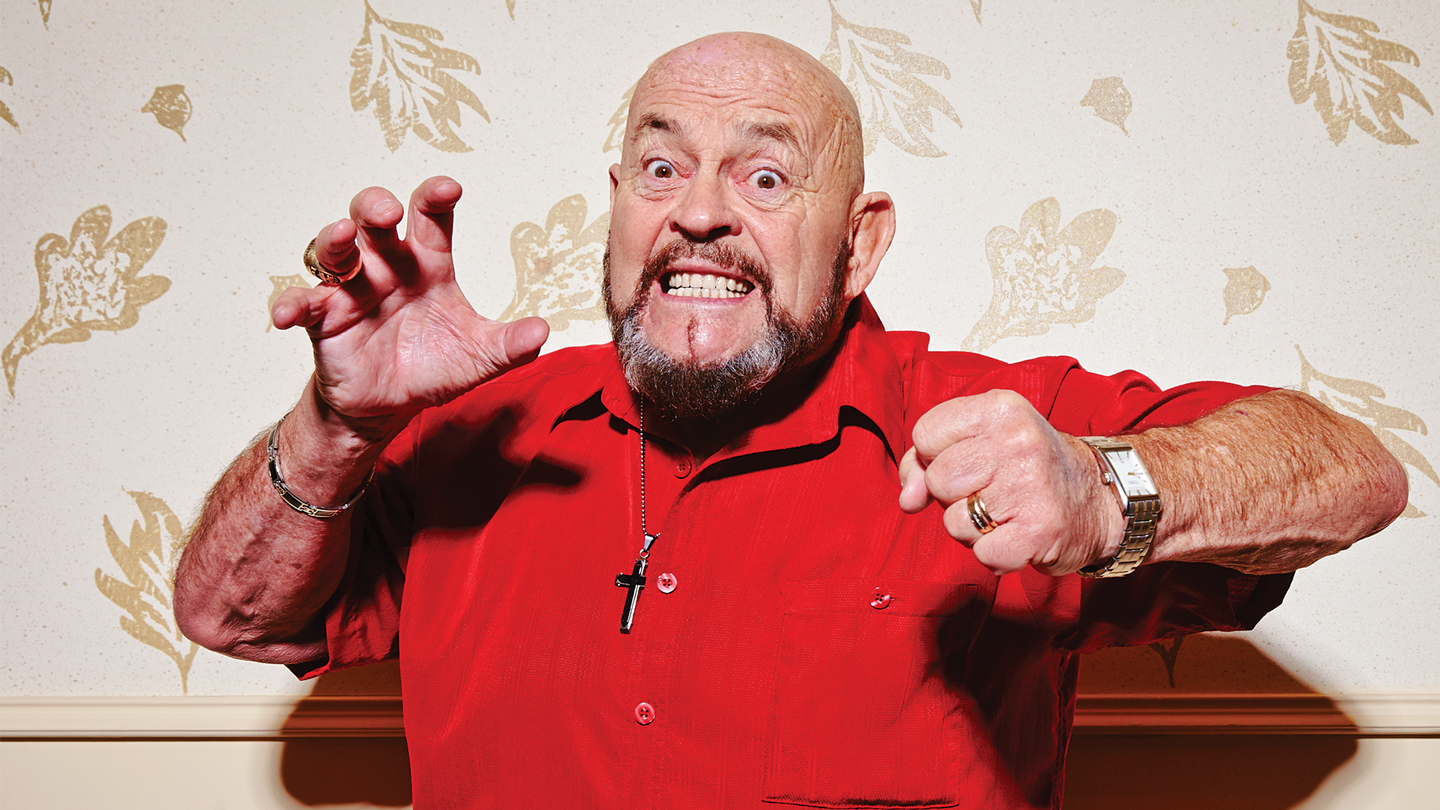
A six-run first inning almost always stands up. But winning from the front never plays out in pro wrestling. The game doesn’t lend itself to comebacks — it demands them. The men in tights and trunks comprise a cult and inhabit a demimonde where narrative rules. Those who are up must fall. Those down must get off the mat. It makes sense, then, that pro wrestling would look most fondly at those whose lives mirror their night’s work. Everyone loves a comeback, but a bunch of old grapplers even more so. Thus, the Cauliflower Alley Club invited former world champion Ivan Koloff and Jake “The Snake” Roberts to Las Vegas for its annual reunion dinner.
Koloff and Roberts authored two of the most shocking victories in the game’s history. Back in 1971, Koloff, the best in a long line of villainous Soviets during the Cold War, pinned Bruno Sammartino for the world title. Sammartino was the game’s biggest name and had held the belt for eight years. The crowd at Madison Square Garden didn’t boo — in fact, the upset for the ages was greeted with stunned silence and Koloff was ushered out of the ring for his own security.
In 1986, in his career-defining moment, Roberts ambushed Ricky “The Dragon” Steamboat, drilled him forehead first into a concrete floor with the DDT, his signature move, then draped his loyal companion, Damien, a 12-foot python, over the dead-to-the-world Hawaiian. At one point, Damien poked his head into Steamboat’s mouth, something promoter Vince McMahon called “the most disgusting thing I’ve ever seen.” This from a man whose memory bank would look like Hieronymus Bosch’s darkest canvas.
The Cauliflower Alley Club didn’t bring Koloff and Roberts to a dingy casino in Las Vegas to celebrate only their triumphs in the ring. No, those in this strange fellowship invited them and would be handing them awards because they endured, because they faced tougher challenges elsewhere, personal cliffhangers that make falls from the top rope look tame, and were making it one day at a time. The 70-year-old Koloff was addicted to drugs and alcohol, but on his darkest day he remembered his parents taking him by horse and sleigh to church along country roads in Quebec. Once a heel, now an ordained minister. Religion isn’t exactly in the equation for Roberts, but his turnaround is no less dramatic than Koloff’s. Theirs are the types of comebacks the CAC especially loves.
Every year it convenes in Sin City, where former heroes and villains make the most of the buffet, a fistful of drink tickets and their twilight years. Spend five minutes in the lobby when the wrestlers check in for the three-day affair and you’ll see the full span of modern wrestling history. Rob Van Dam looks like he could still do flying back kicks at 40. At 61, and with a beer gut, Greg “The Hammer” Valentine looks more like he could be the bass player in Anvil than a pro athlete. And then Paul Vachon rolls in with his walker. In his day, he worked with the Hammer’s father, Johnny Valentine.
The CAC is the legacy of Mike Mazurki, a rubber-faced giant who was a wrestler moonlighting as an actor — or vice versa — back in the 1940s. By the mid-’60s, when his ring career wound down, Iron Mike chaired informal but exclusive weekly gatherings of pro wrestlers, boxers and actors who had portrayed savages noble or otherwise on screen. Mazurki presided in part because he owned the Los Angeles restaurant where they gathered, Barona’s Castle Buffet. All you need to know about the fare at Barona’s was the single item on the menu at most of the meetings that first year: hot dogs.
The CAC’s antic sense of self-deprecating humour survives to this day. Hot dogs aren’t served at the welcoming dinner, just humble cold cuts — not for nothing is it called the “Baloney Blowout.” The menu improves for the awards dinner, but the award for career achievement and contribution to the game is “The Ear,” a chunk of stone that eerily resembles cartilage mangled by a thousand headlocks.
Dick Beyer reckons it was 1967 when he first popped in at Barona’s, five years or so after he beat “Classy” Freddie Blassie for the World Wrestling Association title. “When I joined, I had all the respect in the world for those guys. I learned from them,” he says. Beyer missed a few gatherings over the course of his 39-year career, but since his retirement in 1993 has managed to keep his yearly appointment and now serves on the CAC’s board of directors.
Beyer says it all with what is probably a straight face. That much you can read into faded blue eyes that saw tens of thousands of fists coming and a bulbous nose that was the landing site for the hard bumps. Those and his thick lips are all you have to read when studying him as he sits in his walker. Beyer was famous even if his name and face weren’t. He was the defining masked man of his era, so great that he maintained two separate identities: “The Destroyer” and “Dr. X.” He maintains this trifecta of personas to this day. Throughout the proceedings at the 48th annual CAC reunion, he remains in shroud, if not character, signing his autobiography, Masked Decisions, in triplicate at a table in a ballroom where memorabilia traders are set up for pencil-neck fans.

Even if the 82-year-old former gym teacher counts as three, the crowd of holdovers from those days at Mazurki’s is sadly thin. The inescapable whiff of mortality doesn’t just issue from the wreath and the display for the recently departed that sit at centerpieces amid the traders’ tables. “I was at another reunion a few weeks back and Paul Bearer [best known as the Undertaker’s manager] read a list of everyone who had passed away in the last year and there were 75 names on it,” Beyer says. “Four days later, Paul Bearer died. So many are gone from the ’80s and ’90s, never mind the ’60s.”
One survivor from the CAC’s early days sits across the room from the masked man. Paul “The Butcher” Vachon remains recognizable — if a lot less threatening — in his dotage. His goatee has been in place since he was able to grow one, but his pate no longer requires the blade. Despite travelling the world for decades and living in Vermont, the son of a Montreal policeman still has a strong Quebecois accent. “Cauliflower Alley keeps me young,” Butcher rasps, a bout with throat cancer having left him sounding like he’s talking through a stranglehold. “I’ll keep coming for as long as I can.”
Each year Mr. and Mrs. Butcher drive from Vermont to Vegas, stopping at Omaha to visit his more famous older brother and longtime tag-team partner, Maurice, a.k.a. “Mad Dog.” They would come as a unit if Maurice hadn’t lost a leg when a car ran him down while he was jogging a few years back. Butcher was in L.A. in the ’60s — wet behind the ears, fresh off a first lap of the planet that lasted four years — when Mazurki and friends gave him the freshman rush into the CAC. “I loved wrestling early on but after that I loved wrestlers,” he says, pulling out a deck of cards and setting up a board for the first round of the CAC cribbage tournament.
You might wonder what there is to love about a sport that is held in such low regard—the most universally derided of the perspiring arts, the bat-shit crazy uncle that other sports pretend has no ties to the family. Still, Butcher wants pro wrestling’s traditions preserved and appreciated. “Physically, it’s very tough,” he says. “We all hurt. You do something wrong and it can cripple or kill you or the other guy. A lot of trust is there. But it’s imagination, too. You have to create a character, maybe more than one.”
Butcher Vachon was one of the best in his time, but even he acknowledges he was never the best in his family. In fact, “Mad Dog” was so hated a character and laughable a caricature that he came out the other side of the aesthetic and became a crowd favourite. “Mad Dog was one of the best heels ever,” Vachon says.
Butcher’s brother helped out other wrestlers with character development and possessed enough imagination to populate the Montreal wrestling scene in the ’60s and ’70s with an entire rogues’ gallery. He created storylines that would lap Flaubert’s and ballet better than Balanchine’s.
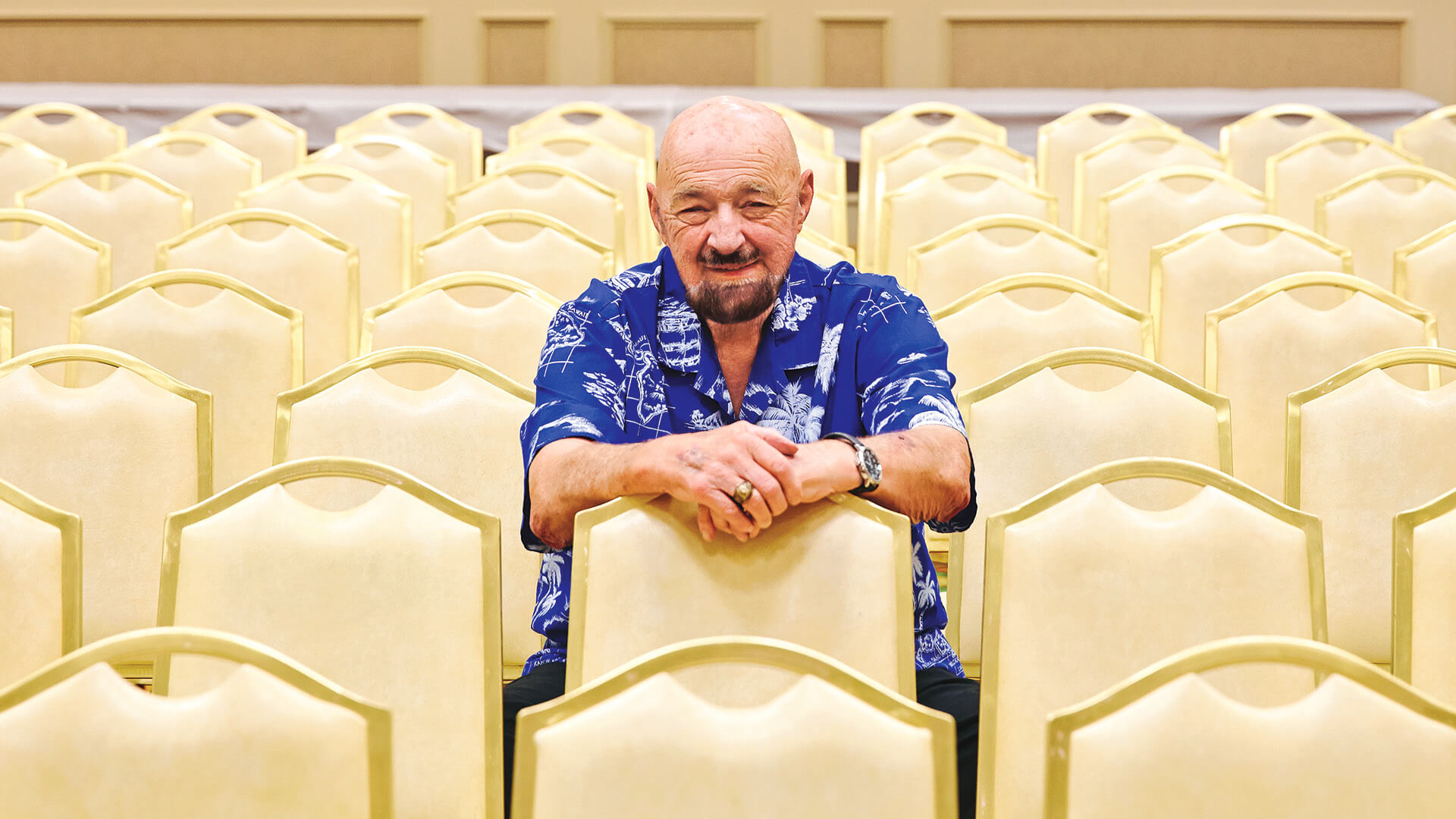
It’s hard to believe any of these men were pictures of health. Bygone stars younger than Beyer and Vachon trade notes on their knee replacements, hip replacements, fused vertebrae and one-piece ankles. They see all these as mere inconveniences. They lament the state of CAC leader Nick Bockwinkel, who faces the onset of dementia, but they think of it as a sad twist in his story, not an indictment on the game.
Still, when “No Class” Bob Bass and Bob Wayne see Mick Foley, they just shake their heads. Foley, a.k.a. “Cactus Jack,” a.k.a. “Mankind,” was the father of hardcore, the star who didn’t move the limits but erased them entirely. He Jackass-ified the game. Before Foley, a chair cracking your skull finished a match. After, 15 or 20 were a prelude. Before him, a spill out of the ring or off the top rope cued an exit. After him, it was a fall from the top of the steel cage. “Just think what he’s been through, how he’s going to end up,” Bass says when he sees Foley stoically shambling through the hallway.
“Yeah, but when they ask him, he’d tell them he’d do it all again, wouldn’t change a thing,” Wayne says.
Roberts would. Not just a thing but almost everything in his darkest days. His issues with drugs and alcohol were notorious. In one of those few times when pro wrestling climbs over the fourth wall, when reality intersects with the show’s surreality, Vince McMahon rolled out Roberts as a drunken wreck on broadcasts. After McMahon fired him, Roberts retreated to smaller outfits and fell even further — he was once interviewed immediately after a match that he couldn’t remember.
These, however, marked only stations in his descent, not his lowest point. That might have been captured in the documentary Beyond the Mat, when Roberts, alcoholic, crack-smoking and estranged from his family, was reduced to working small-time promotions and listing towards what you presumed would be a messy and imminent demise. Said one friend who asked that his name not be mentioned: “When Jake came to this event a couple of years ago, he looked terrible. We thought he might never make it back to another one.”
The Snake was once so commanding in front of an audience. Actors have to play in front of audiences in the hundreds on Broadway. He played on the game’s biggest stage, WrestleMania — almost 100,000 in stadiums, millions more on pay-per-view. He showed he was a master of pro wrestling’s theatre, somewhat scripted, somewhat spontaneous. He was capable of pure existential moments despite being in the swirl of booze and drugs — or maybe because he was so strung out.
It was a vicious cycle. Holding the mic, he used the pain and resentment from his youth, when his father ignored, neglected and belittled him, and when he decided not to go to college and went into wrestling to win his father’s approval. And when the lights went down, he drank and found whatever drug it would take to numb the pain. At television tapings, some famous pros would need two or three takes to hit their marks and repeat their tired old lines. Roberts was done in one spontaneous go, and invested every word with a darkness found only in a coal mine on the wrong side of a cave-in. And yet, based on his Twitter account in the days leading up to the reunion, he seemed transformed from his established character.
It started with sunny optimism a week before.
It became a break with his past when he checked in at the Gold Coast.
Around about the time of his first cup of coffee on the day of the awards event, Roberts typed in 87 characters in a combination that suggests a state heretofore unprecedented: a discomfort in his own Snakeskin.
Awards night in the ballroom at the Gold Coast is the strangest scene in sports and maybe in the world beyond. A man in a tuxedo and a lucha libre mask gets not so much as a second glance. References to an inter-gender tag team, a Hair vs. Title match and Sir Oliver Humperdink pass for the everyday. When friends of Paul Bearer bring out his trademark, an urn, the moment’s met with unfeigned solemnity.
Inside the VIP circle beside the stage, you catch a well-preserved though silver-haired Ricky Steamboat, last year’s men’s wrestling honoree, comparing notes with Sgt. Slaughter, who looks like he was walking off the 18th green and not on leave from a bootcamp. Rob Van Dam, the aerial artist who announced his retirement just a couple of weeks back, is catching up with Adam Copeland, the Torontonian formerly known as “Edge” who is cutting out a career for himself as a Hollywood B-lister.
At a table outside the inner VIP circle, “No Class” Bob Bass looks on with a crew of former wrestlers who worked every arena great and small. The ringleader, No Class takes a head count: all present save one, Bob Wayne. No Class excuses himself, leaves the table and heads to the hotel. A couple of presentations and long-winded speeches later, he returns with a report that’s sad but not surprising. “His knees, the pain’s too much,” Bass says. “He took a Percocet, but it’s not helping and he doesn’t want to take another.”
Wayne came to this year’s reunion because he was worried that his knee replacement surgery, months off, would make him unable to come to next year’s. Even if he were back on his feet by the 50th CAC fete, the names of friends would be on that scroll beside the wreath. This year, Wayne joins dozens, maybe hundreds, who’d want to be in the ballroom but can’t because their bodies are failing them. Wayne just got closer than all the rest.
Just as Bass is assuring all at the table that Wayne is OK, Jake “The Snake” Roberts stands up to put on his jacket in advance of being called to the stage. He knows he’s being watched. He has spent a lifetime that way. And at this moment, doing something so everyday as putting his arm in a sleeve, his body fails him; not as painfully as Wayne’s, but more conspicuously. His shoulder has been wrecked from a thousand falls. If no other audience could understand the damage done, this one could, but Roberts doesn’t play it for laughs, doesn’t defuse the situation with a smile. Having been a laughingstock for failures of character, he sees no humour in failures of body.
The emcee calls on “Diamond” Dallas Page for the next presentation. Page is certainly the fittest-looking 54-year-old pro wrestler in the room and possibly anywhere: straight of back, certain of step, torso in a V, though not blown out like a bodybuilder. And he seems one of the more positive life forces in this or any sport. If it were only career achievement, Roberts would require no introduction whatsoever, and Page addresses nothing about matches or titles. He dwells on the man unseen, Roberts’s generosity with him, how the Snake critiqued tapes of his fights, often harshly, always fairly. And, as he must, DDP talks about his mentor’s struggles, how he took Roberts into his home 20 years ago and tried to clean him up.
DDP doesn’t mention the present day, but everyone in the room knows the bare facts: He had taken in Roberts again last year and supported him through rehab, through his time in AA. Just a couple of months before, he had taken in Scott Hall, another contemporary with a history of addiction. Maybe DDP intended to go there, but he stops when his voice cracks and eyes redden. No big wind-up, he just waves Roberts up to the podium.
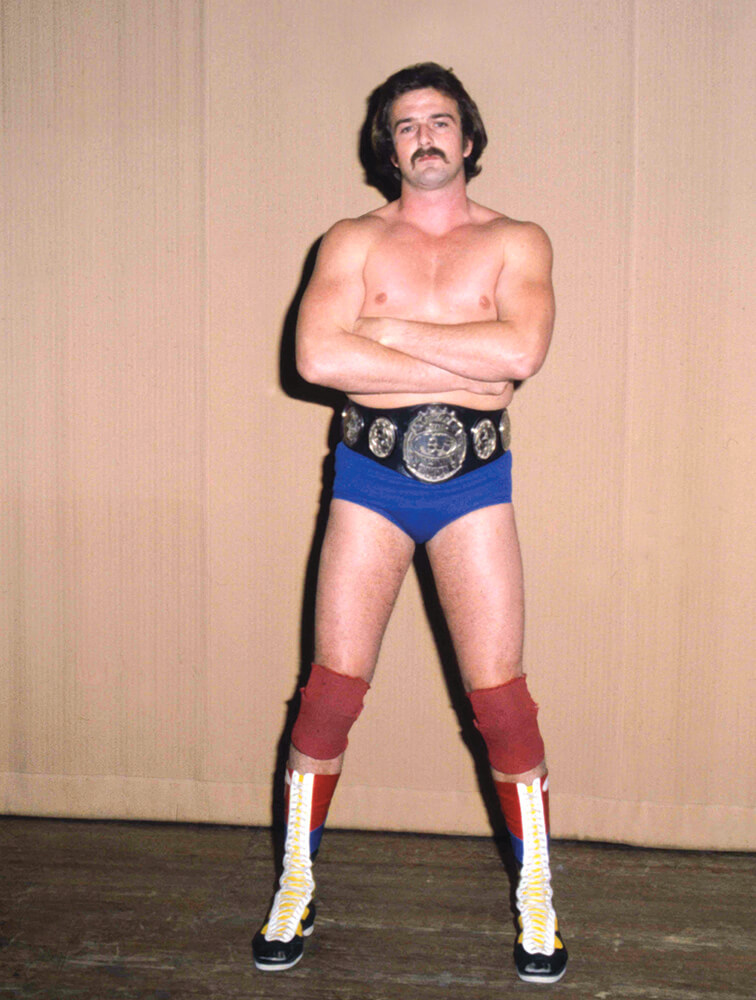
The Snake gets as close to a standing ovation as you can get at these events. After half a minute, the room goes silent. Roberts bows his head and speaks in a growl that bottoms out the woofer on the P.A. “I stand before you today… wearing a suit,” he says, deadpan, laughter filling the room.
When it finally dies down, he resets the room and in two sentences changes the mood. And at the end of every sentence after that he comes to a full stop, dialing down his voice to three, then two, and finally one. “I wish I could laugh,” he says, his head bowed. “The honest-to-God truth is I thought I’d never wear a suit again until it was time to stick me in the ground. I’m ashamed of where I’ve been. I’ve earned all the scars, the labels, the tattoos and all that. I’ve made a lot of mistakes. This is not the end. This is not the beginning. This is not the beginning of the end. This is the end of the beginning.”
Jake “The Snake” Roberts came without a script or even notes. He looks up and pans the tables in front of the podium to find someone who’d understand. He had shot every conceivable angle, every storyline — as heel, as the avenging angel with a dirty face — and he had made every last word sing. But this was his moment, not a remembrance of rings past, loath as he was to accept honours for what he had been. It was nothing he ever sought in his career, in his character. No, this was his shot, the one, only and last. And as far as he ever sank, he rose twice as high, a confession and a declaration wrapped up in spontaneous, heartfelt poetry.
I fell in love with professional wrestling.
I fell in love with performing,
Not knowing that I had been performing all my life.
My struggles in my childhood.
As a young man I made a lot of mistakes, a lot.
The one mistake I never made:
I never gave up on myself.
Though I came so friggin’ close.
I’m ashamed to tell you.
The only reason that I didn’t commit suicide is those three kids sitting there.
Three of my eight. I didn’t want to hurt them anymore.
This guy right here [DDP] stuck a hand out when I couldn’t pull myself up.
Stuck a hand out and helped me, man.
What it’s all about.
I’ve had a wonderful career, 37 years.
And I hope it pales in comparison to what I do in the next 20 years.
Helping other people with the problem I had.
See, I never met anybody in jail or rehab that had said, “When I grow up,
I want to be a drunk and drug addict.” Nobody dreams of that.
I want to thank the WWE. They tried to help me.
All of my friends who tried to encourage me.
I wasn’t ready yet.
I’m ready now.
Thank you Diamond Dallas Page.
Thank you to my kids.
To Ricky Steamboat.
I’ll drop your ass again.
Before the crowd springs to its feet, Steamboat shoots to his and runs to the stage. He doesn’t go aerial, no flying dropkick, just a handshake and then a hug, an acknowledgment of Jake the Snake’s career, a moment when wrestling was so real that it made the world outside this room seem fake.
Take a deep breath, reader. Thanks for scrolling to this point. You will be properly rewarded now as the hallucinogens have started to wear off.
First, let me address that bit about “the whiff of mortality.” I will admit, I’m not sure if those were actually Paul Bearer’s ashes in the urn at awards night or somebody’s uncle’s, and all DNA is lost in the roasting. Nor did I have a chance to find out whether this was the same urn that showed up in a subsequent edition of Raw in which CM Punk actually dumped an urn-full of somebody on a supine Undertaker. But I do know that several in this rogues’ gallery have joined Bearer since the story was first written. I am sorry to report Nick Bockwinkel died in Vegas in 2015, Ivan Koloff in North Carolina in 2017 and Dick Beyer in Buffalo this week.
Others — and not just Sgt. Slaughter — soldier on. Paul Vachon is 80 and lives in Vermont. Bob Wayne had knee replacement and got the hitch out of his giddy-up, not to mention the pain. Some of the bigger names mentioned here — Ricky Steamboat, Rob Van Dam, Greg “The Hammer” Valentine — are coming to a Comic-Con near you. Diamond Dallas Page has his better-living-through-yoga thing going on. And Edge, well, he’s still in entertainment. Billed as Adam Copeland, he was a regular on the TV series Haven and guest-starred in an episode of Private Eyes, which is based on a mystery novel I wrote.
But let’s get to the two gents in the lead of this story. I spent a week with Jake Roberts in Atlanta, brought in to ghost-write his autobiography, but I’m sure that Jake misinterpreted the process, presuming it was his role to ghost the writer. I spent all day with him to get five serviceable minutes here and another couple there, a crying shame because he had a story that was by turns tragic, terrifying and inspiring. I watched DDP’s wife groom the Snake’s skullet and dye his moustache, watched him order one side of the menu at IHOP — you know, that sort of thing. But aside from getting a deeper appreciation of Mickey Rourke in The Wrestler, nothing much really came out of it.
And then there’s “No Class” Bobby Bass, whom I’ve stayed in touch with and had lunch or a beer with when I pull over in Brighton, Ont. (and, yes, he’s the only Brightonian who wears a cowboy hat). He’s still hanging in — last we talked, he was taking time off from long-distance truck-driving to recover from vascular surgery on his legs. He’s also still the much-beloved social coordinator of his crew that goes to the Cauliflower Alley weekend every spring. He always extends an invitation, which I appreciate but have yet to take him up on. Maybe it’s a chimera that’s best left at once in a lifetime.
Designed by Craig Battle

